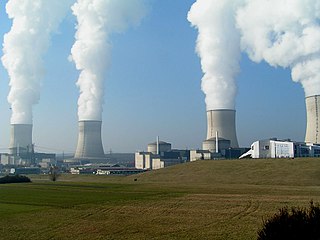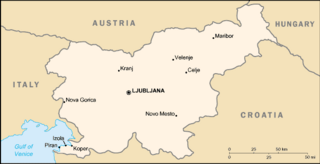
Japan is a major consumer of energy, ranking fifth in the world by primary energy use. Fossil fuels accounted for 88% of Japan's primary energy in 2019. Japan imports most of its energy due to scarce domestic resources. As of 2022, the country imports 97% of its oil and is the larger LNG importer globally.

Energy in the United Kingdom came mostly from fossil fuels in 2021. Total energy consumption in the United Kingdom was 142.0 million tonnes of oil equivalent in 2019. In 2014, the UK had an energy consumption per capita of 2.78 tonnes of oil equivalent compared to a world average of 1.92 tonnes of oil equivalent. Demand for electricity in 2023 was 29.6 GW on average, supplied through 235 TWh of UK-based generation and 24 TWh of energy imports.

Renewable energy commercialization involves the deployment of three generations of renewable energy technologies dating back more than 100 years. First-generation technologies, which are already mature and economically competitive, include biomass, hydroelectricity, geothermal power and heat. Second-generation technologies are market-ready and are being deployed at the present time; they include solar heating, photovoltaics, wind power, solar thermal power stations, and modern forms of bioenergy. Third-generation technologies require continued R&D efforts in order to make large contributions on a global scale and include advanced biomass gasification, hot-dry-rock geothermal power, and ocean energy. In 2019, nearly 75% of new installed electricity generation capacity used renewable energy and the International Energy Agency (IEA) has predicted that by 2025, renewable capacity will meet 35% of global power generation.

Brazil is the 7th largest energy consumer in the world and the largest in South America. At the same time, it is an important oil and gas producer in the region and the world's second largest ethanol fuel producer. The government agencies responsible for energy policy are the Ministry of Mines and Energy (MME), the National Council for Energy Policy (CNPE), the National Agency of Petroleum, Natural Gas and Biofuels (ANP) and the National Agency of Electricity (ANEEL). State-owned companies Petrobras and Eletrobras are the major players in Brazil's energy sector, as well as Latin America's.

Energy in Finland describes energy and electricity production, consumption and import in Finland. Energy policy of Finland describes the politics of Finland related to energy. Electricity sector in Finland is the main article regarding electricity in Finland.

China is the world's largest electricity producer, having overtaken the United States in 2011 after rapid growth since the early 1990s. In 2021, China produced 8.5 petawatt-hour (PWh) of electricity, approximately 30% of the world's electricity production.
Energy in Ethiopia includes energy and electricity production, consumption, transport, exportation, and importation in the country of Ethiopia.

Energy in Australia is the production in Australia of energy and electricity, for consumption or export. Energy policy of Australia describes the politics of Australia as it relates to energy.

Energy in Austria describes energy and electricity production, consumption and import in Austria. Austria is very reliant on hydro as an energy source, supported by imported oil and natural gas supplies. It is planned by 2030 to become 100% electricity supplied by renewable sources, primarily hydro, wind and solar.

The electricity sector in France is dominated by its nuclear power, which accounted for 71.7% of total production in 2018, while renewables and fossil fuels accounted for 21.3% and 7.1%, respectively. France has the largest share of nuclear electricity in the world, and together with renewable energy supplies, this has helped its grid achieve very low carbon intensity.

Electricity production in Belgium reached 87.9 terawatt-hours (TWh) in 2020, with nuclear power (39%), natural gas (30%), and wind (15%) as the primary sources. Additional contributions came from biofuels and waste (7%), solar (6%), and coal (2%). In the same year, the total electricity demand was 80.9 TWh, with consumption predominantly from the industrial sector (50%), followed by commercial (25%), residential (23%), and transport (2%) sectors.

The electricity sector in Switzerland relies mainly on hydroelectricity, since the Alps cover almost two-thirds of the country's land mass, providing many large mountain lakes and artificial reservoirs suited for hydro power. In addition, the water masses drained from the Swiss Alps are intensively used by run-of-the-river hydroelectricity (ROR). With 9,052 kWh per person in 2008, the country's electricity consumption is relatively high and was 22% above the European Union's average.

Primary energy consumption in Spain in 2020 was mainly composed of fossil sources. The largest sources are petroleum (42.3%), natural gas (19.8%) and coal (11.6%). The remaining 26.3% is accounted for by nuclear energy (12%) and different renewable energy sources (14.3%). Domestic production of primary energy includes nuclear (44.8%), solar, wind and geothermal (22.4%), biomass and waste (21.1%), hydropower (7.2%) and fossil (4.5%).

Energy in Belarus describes energy and electricity production, consumption and import in Belarus. Belarus is a net energy importer. According to IEA, the energy import vastly exceeded the energy production in 2015, describing Belarus as one of the world's least energy sufficient countries in the world. Belarus is very dependent on Russia.

Total primary energy supply (TPES) in Slovenia was 6.80 Mtoe in 2019. In the same year, electricity production was 16.1 TWh, consumption was 14.9 TWh.
Energy in Tanzania is fundamental to the nation's projected economic growth, with estimates indicating that the economy could expand sevenfold by 2040, while energy demand is expected to increase by only 150% due to advancements in fuel efficiency. The country is actively enhancing its energy mix, primarily relying on natural gas for more than half of its electricity generation and significant contributions from hydropower, with oil primarily used for backup power. Tanzania has a wide range of energy resources in abundance, which are not yet fully exploited. These include; wood fuel, other biomass fuels, hydropower, natural gas, coal, wind, geothermal, uranium and solar.
Uzbekistan had a total primary energy supply (TPES) of 48.28 Mtoe in 2012. Electricity consumption was 47.80 TWh. The majority of primary energy came from fossil fuels, with natural gas, coal and oil the main sources. Hydroelectricity, the only significant renewable source in the country, accounted for about 2% of the primary energy supply. Natural gas is the source for 73.8% of electricity production, followed by hydroelectricity with 21.4%.
Myanmar had a total primary energy supply (TPES) of 16.57 Mtoe in 2013. Electricity consumption was 8.71 TWh. 65% of the primary energy supply consists of biomass energy, used almost exclusively (97%) in the residential sector. Myanmar’s energy consumption per capita is one of the lowest in Southeast Asia due to the low electrification rate and a widespread poverty. An estimated 65% of the population is not connected to the national grid. Energy consumption is growing rapidly, however, with an average annual growth rate of 3.3% from 2000 to 2007.
Denmark is a leading country in renewable energy production and usage. Renewable energy sources collectively produced 81% of Denmark's electricity generation in 2022, and are expected to provide 100% of national electric power production from 2030. Including energy use in the heating/cooling and transport sectors, Denmark is expected to reach 100% renewable energy in 2050, up from the 34% recorded in 2021.

World energy supply and consumption refers to the global supply of energy resources and its consumption. The system of global energy supply consists of the energy development, refinement, and trade of energy. Energy supplies may exist in various forms such as raw resources or more processed and refined forms of energy. The raw energy resources include for example coal, unprocessed oil & gas, uranium. In comparison, the refined forms of energy include for example refined oil that becomes fuel and electricity. Energy resources may be used in various different ways, depending on the specific resource, and intended end use. Energy production and consumption play a significant role in the global economy. It is needed in industry and global transportation. The total energy supply chain, from production to final consumption, involves many activities that cause a loss of useful energy.



















